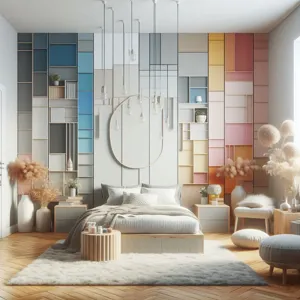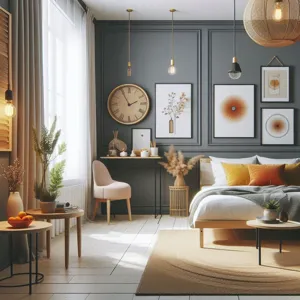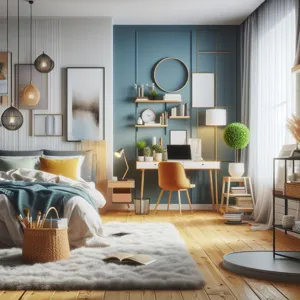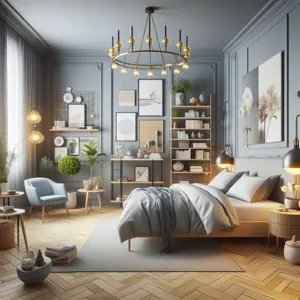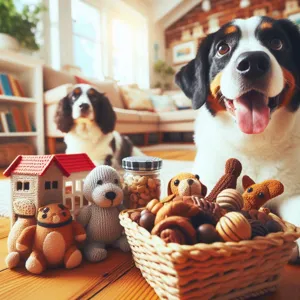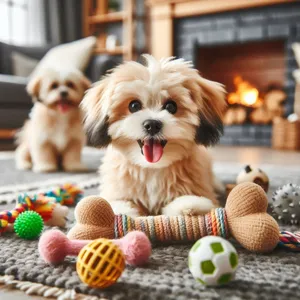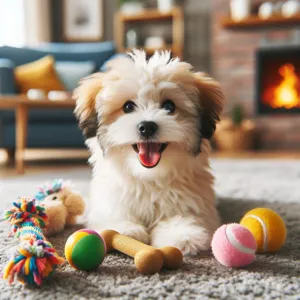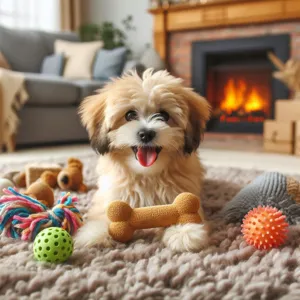Living in a small space can often feel constricting, but it doesn’t have to be a compromise on style or comfort.
With the right techniques, you can transform your cozy quarters into a spacious and inviting haven. Whether you’re in an apartment, a studio, or simply dealing with a compact room, the challenge lies in maximizing every inch without sacrificing aesthetic appeal. In this blog post, we’ll share ten expert tips that reveal how to create an illusion of space while enhancing the overall ambiance of your small room. From smart furniture choices and strategic color palettes to clever storage solutions and lighting tricks, these insights will empower you to cultivate a serene and welcoming atmosphere that feels anything but cramped. Get ready to embrace the charm of your small space and unlock its full potential!
1. Understanding the Psychology of Space

When it comes to small rooms, the way we perceive and interact with our space plays a crucial role in how spacious and inviting it feels. Understanding the psychology of space involves recognizing that our environment can significantly influence our mood, behavior, and sense of comfort. A well-designed small room should feel like a cozy retreat rather than a cramped enclosure.
One key element of this psychology is the concept of openness. Rooms that feel airy and expansive often incorporate light colors, reflective surfaces, and strategic furniture placement. Light hues, such as soft whites, pastels, or gentle grays, can create an illusion of a larger area, allowing walls to recede visually. Complementing this with mirrors can enhance the effect, as they reflect light and create depth, tricking the eye into perceiving a larger space.
Moreover, the arrangement of furniture is paramount. Choosing multi-functional pieces can not only save space but also contribute to the overall flow of the room. For instance, a well-placed ottoman can serve as both a footrest and extra seating, while a wall-mounted desk frees up floor space. It’s essential to maintain clear pathways and avoid overcrowding, as clutter can stifle movement and create a sense of chaos.
The layout should also consider the vertical space. Utilizing shelves and wall-mounted storage can draw the eye upward, creating a sense of height and spaciousness. This upward dimension can be further enhanced by hanging artwork or decorative elements at varying heights, which adds visual interest and prevents the room from feeling flat.
Ultimately, understanding the psychology of space is about creating a harmonious balance between functionality and aesthetics. By making conscious design choices that promote openness, clarity, and comfort, you can transform your small room into a sanctuary that feels both spacious and inviting.
2. Choosing the Right Color Palette
When it comes to making a small room feel spacious and inviting, color plays a pivotal role. The right color palette can transform a cramped space into a serene retreat, creating an illusion of roominess and openness. Start with light colors, as they naturally reflect more light and can make walls appear further away. Soft whites, pale blues, gentle greens, and light grays are excellent choices that evoke a sense of calm and tranquility.
Consider painting the ceiling a shade lighter than the walls; this trick draws the eye upward, creating an airy effect that can make even the smallest rooms feel more expansive. For a touch of warmth, you can introduce pastel accents or muted tones through decor elements like cushions, throws, or artwork. This adds depth without overwhelming the space, maintaining that airy feel.
Furthermore, opting for monochromatic schemes can create a seamless flow, letting the eye move effortlessly across the room. If you’re feeling adventurous, incorporate one or two bolder hues for visual interest—think an accent wall or colorful furniture pieces. Just remember to balance these with lighter tones to prevent the space from feeling cramped.
Lastly, don’t shy away from incorporating reflective surfaces, such as mirrors or glossy finishes, which can enhance natural light and further amplify the sense of space. Choosing the right color palette is not just about aesthetics; it’s about crafting an environment that feels open, inviting, and comfortable. By carefully selecting your colors, you can create a harmonious sanctuary that charms and uplifts anyone who steps inside.
3. Maximizing Natural Light
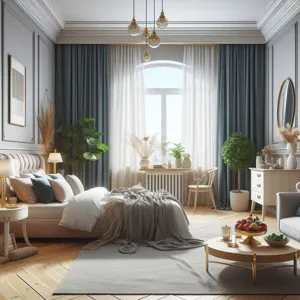
Maximizing natural light is one of the most effective strategies to transform a small room into a bright, airy sanctuary. Sunlight has an incredible ability to open up spaces, creating an illusion of expansiveness that can make even the coziest of rooms feel inviting. To harness the power of natural light, start by assessing your windows. Keep window treatments light and breezy—opt for sheer curtains or blinds that can be easily raised to allow sunlight to stream in. Avoid heavy drapes that can block light and make the space feel cramped.
In addition to window treatments, consider the placement of mirrors in your room. Strategically placing a large mirror opposite a window can reflect light back into the room, amplifying the effects of sunlight and adding depth to your space. You can also experiment with lighter paint colors on the walls, as soft whites, pastels, or light grays can enhance the brightness and make the room feel more open.
Moreover, think about the furniture and decor you choose. Select pieces that are low-profile and streamlined, allowing light to flow freely throughout the room. Glass furniture or items with reflective surfaces can further contribute to a sense of openness. Finally, don’t overlook the importance of keeping the space uncluttered. A tidy room not only feels larger but also allows the natural light to shine through unobstructed, creating a warm and welcoming atmosphere. By thoughtfully maximizing natural light, you can turn your small room into a spacious haven that radiates comfort and style.
4. Smart Furniture Selection
When it comes to making a small room feel spacious and inviting, smart furniture selection is key. The right pieces can transform a cramped space into a comfortable and aesthetically pleasing retreat. Start by opting for multi-functional furniture that serves more than one purpose. For instance, a chic ottoman that doubles as storage can keep clutter at bay while providing extra seating. Similarly, a bed with built-in drawers or a coffee table that can extend into a dining table maximizes utility without overwhelming the space.
Additionally, consider the scale and style of your furniture. Choosing items that are proportionate to the room can create a sense of harmony. Avoid bulky, oversized pieces that can make the room feel even smaller. Instead, look for sleek, streamlined designs that draw the eye upward, creating the illusion of height. Furniture with legs, such as sofas and chairs, can also foster a sense of openness by allowing light to flow underneath.
Color plays a crucial role in furniture selection as well. Light, neutral tones can blend seamlessly into the room, making the space feel airy and expansive. If you want to incorporate color, choose accent pieces that can easily be moved or replaced, such as cushions or throws, allowing for flexibility without compromising the overall spacious feel.
Lastly, don’t underestimate the power of transparency. Furniture made from glass or acrylic can create an unobtrusive effect, allowing light to filter through and maintaining an open atmosphere. By thoughtfully selecting your furniture, you can cultivate a small room that feels inviting, lively, and surprisingly expansive.
5. The Power of Mirrors
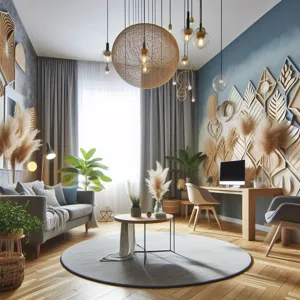
Mirrors are a small room’s best friend, wielding the power to transform confined spaces into airy, inviting retreats. By strategically placing mirrors within your room, you can create an illusion of depth and openness, making even the coziest areas feel more expansive.
Consider hanging a large mirror on one wall; this not only reflects light, making the space feel brighter, but also visually doubles the area, drawing the eye outward. A well-placed mirror across from a window can amplify natural light, bringing in the outside world and enhancing the overall ambiance.
Additionally, mirrored furniture, such as a coffee table or dresser, can contribute to this effect. These reflective surfaces add a touch of elegance while seamlessly blending into the decor, allowing the room to breathe rather than feel weighed down by bulky furniture.
For a more dynamic approach, try arranging a collage of smaller mirrors in varying shapes and sizes. This not only adds visual interest but also invites curiosity, encouraging guests to explore the nuances of the space.
Ultimately, the strategic use of mirrors can enhance the flow of a small room, creating a harmonious balance between style and functionality. By harnessing their reflective magic, you can turn your intimate quarters into a spacious sanctuary that feels both welcoming and expansive.
6. Creating Multi-Functional Spaces
Creating multi-functional spaces is a game-changer when it comes to maximizing the potential of a small room. In a world where square footage is often at a premium, the ability to repurpose areas for various uses can make all the difference between feeling cramped and cozy.
Start by identifying the activities you want to accommodate within the room. Perhaps it’s a cozy reading nook that doubles as a workspace, or a guest bedroom that can transform into a home office. Consider furniture pieces that serve multiple purposes, such as a sofa bed or an ottoman with hidden storage. A stylish coffee table can also double as a desk if you opt for a slim design that can be easily pushed aside when not in use.
Utilize vertical space by installing shelves that can hold both decorative items and practical essentials, such as books or office supplies. This not only helps declutter surfaces but also draws the eye upward, creating the illusion of higher ceilings. Foldable furniture, like wall-mounted desks or collapsible dining tables, can be a fantastic way to create flexible spaces that adapt to your needs throughout the day.
Lighting plays a pivotal role in multi-functional spaces as well. Bright, well-placed lighting can enhance the functionality of each area, while softer, ambient lighting can create a warm, inviting atmosphere for relaxation. Use layered lighting techniques—overhead fixtures, floor lamps, and accent lights—to ensure each part of your room serves its purpose without overwhelming the senses.
By thoughtfully designing a room that can easily transition between functions, you’ll not only maximize your available space but also create a dynamic environment that feels both spacious and inviting. With a little creativity and strategic planning, your small room can become a versatile haven tailored to your lifestyle.
7. Utilizing Vertical Space

When it comes to maximizing the space in a small room, utilizing vertical space can be a game-changer. Instead of focusing solely on the floor area, think about how you can draw the eye upward and make the most of your walls. This approach not only creates an illusion of height but also adds an element of style and functionality to your space.
Start by installing tall bookshelves that reach up to the ceiling. These towering structures can store books, decorative items, and even plants, making use of every inch available. Arrange items in a visually appealing way, mixing taller objects with shorter ones to create a dynamic look. Floating shelves are another fantastic option; they allow you to display art, photographs, or collectibles without taking up valuable floor space.
Consider adding hooks or pegboards for hanging items like bicycles, bags, or even kitchen utensils, transforming your walls into functional storage solutions. In the bedroom, opt for a lofted bed to create a cozy nook underneath for a desk or reading area.
Don’t overlook the power of vertical patterns, too. Choose wallpapers or paint techniques that draw the eye upward, such as vertical stripes or tall, slim prints. Mirrors can also be strategically placed to enhance this effect, reflecting light and creating an airy feel throughout the room.
By embracing verticality, you can turn a small room into a stylish and inviting sanctuary that feels much larger than it is. With a little creativity, you’ll not only maximize your space but also create a visually stunning environment that reflects your personal style.
8. Keeping Clutter at Bay
A small room can quickly feel cramped and overwhelming if clutter starts to pile up. One of the most effective ways to create a spacious and inviting atmosphere is to adopt a clutter-free mindset. Begin by assessing your belongings and determining what you truly need versus what can be tucked away or discarded. Invest in smart storage solutions that blend seamlessly with your décor—think stylish baskets, multi-functional furniture, or floating shelves that utilize vertical space without sacrificing style.
Regularly declutter your space, setting aside time each week to tidy up and evaluate items that may have outlived their usefulness. Remember, less is more when it comes to small rooms. A few well-chosen decorative pieces can make a significant impact, while too many items can create visual chaos.
Incorporate organizational tools that keep your essentials accessible but out of sight, such as under-bed storage boxes or decorative bins for everyday items. This not only helps maintain a clean look but also enables you to enjoy your space fully without the distraction of disarray.
Additionally, encourage a minimalistic approach to your décor. Opt for a few statement pieces rather than overwhelming your walls with a gallery of pictures or excessive knick-knacks. By keeping clutter at bay, you’ll foster an environment that feels open, airy, and welcoming—one where you can truly relax and unwind.
9. Incorporating Open Shelving
Incorporating open shelving into your small room design is a clever way to create an illusion of space while also adding functionality and style. Unlike traditional closed cabinets that can feel bulky and confining, open shelves allow for a more airy aesthetic, making the walls feel less cluttered and more inviting.
When executed thoughtfully, open shelving can serve as a stunning focal point in any room. For instance, in a living area, floating shelves adorned with carefully curated books, plants, and decorative items can draw the eye upward, giving the space a sense of height and openness. In a kitchen, open shelving can showcase your favorite dishware, cookbooks, or unique collectibles, transforming everyday items into beautiful displays that enhance the room’s decor.
To maximize the benefits of open shelving, consider using light-colored materials or transparent glass for the shelves themselves. This will help maintain an unobstructed view and contribute to a more expansive feel. Additionally, alternating between decorative items and functional ones ensures that your shelves not only look good but are also useful, striking a balance between form and function.
Another tip is to install the shelves at different heights. This not only adds visual interest but also allows you to utilize vertical space effectively, drawing the eye upward and creating the illusion of a taller room. When styling your shelves, remember to leave some spaces empty; a bit of negative space can be just as important as the items you display, as it allows the eye to rest and prevents the area from feeling overcrowded.
In summary, open shelving is a versatile and stylish solution for small rooms. By thoughtfully curating what you display and considering the materials and arrangements, you can create an inviting atmosphere that feels spacious and well-organized, making the most of every inch in your home.
10. Using Light Fabrics and Textures
When it comes to creating an illusion of space in a small room, the choice of fabrics and textures plays a pivotal role. Opting for light fabrics can significantly enhance the overall ambiance, making the area feel more open and airy. Think sheer curtains that gently filter sunlight, allowing natural light to flood the room without overwhelming it with heavy drapery. Light-colored linens, like whites, soft pastels, or even delicate patterns, can also contribute to a sense of spaciousness, adding a fresh and inviting feel.
Incorporating a variety of textures can further enrich your small space without weighing it down. Light, woven textiles like cotton or linen for throw pillows and blankets add depth while maintaining a breezy vibe. Consider layering these fabrics—pairing a soft, lightweight throw over a light sofa, or using textured cushions against a smooth, light-colored backdrop. This not only creates visual interest but also encourages a cozy atmosphere that invites relaxation.
Additionally, using light fabrics on furniture can contribute to a more spacious feel. Upholstering chairs or sofas in lighter shades or fabrics with subtle patterns can prevent them from visually dominating the space. If you’re working with a small bedroom, consider light bedding that complements your walls and furniture; the consistent color palette can create a seamless flow, making the room appear larger.
Finally, don’t underestimate the power of reflective surfaces. Incorporating light-colored textures alongside mirrors can amplify the effect of natural light, further enhancing the open feel of your room. Whether it’s a mirrored bedside table or decorative elements that catch the light, these small touches can make a significant difference in how spacious and inviting your small room feels. By thoughtfully selecting light fabrics and textures, you can transform your space into a serene retreat that feels expansive and welcoming.
11. Strategic Artwork Placement
### 11. Strategic Artwork Placement
Artwork has an incredible power to transform the ambiance of a room, and when it comes to small spaces, thoughtful placement can make all the difference. Instead of overcrowding your walls with multiple pieces, consider curating a few select artworks that resonate with your personal style and enhance the room’s overall aesthetic.
Start by choosing larger pieces that draw the eye and create a focal point. A bold painting or an oversized photograph can add depth and interest to a small room, making the space feel more expansive. Hang it at eye level to ensure it captures attention without overwhelming the viewer. Positioning art above furniture, like a sofa or a console table, can also create a sense of height, drawing the eye upward and making the room feel taller.
Additionally, consider the use of mirrors as artwork. A well-placed mirror not only reflects light but also creates the illusion of additional space. By incorporating a decorative mirror into your display, you can double the impact of your artwork while enhancing the room’s brightness and openness.
Don’t shy away from experimenting with different arrangements. A gallery wall with a mix of framed art, photographs, and even decorative objects can add personality without feeling cluttered. To maintain a sense of balance, use a consistent frame style or color palette throughout the collection. This creates a cohesive look that ties the room together.
Lastly, pay attention to the colors in your artwork. Lighter, brighter pieces can open up a space, while darker, heavier colors might feel more constricting. Choose artworks that complement your room’s color scheme to create harmony and make the area feel inviting. By strategically placing your artwork, you can create an illusion of spaciousness, transforming your small room into a stylish and welcoming retreat.
12. Adding Greenery for Freshness
Adding greenery to your small space can transform it into a fresh, inviting oasis. Plants have an incredible ability to breathe life into any room, creating a sense of vibrancy and warmth that instantly uplifts the atmosphere. Whether you choose a single statement plant or a collection of smaller ones, the right greenery can make your space feel larger and more open.
Start with versatile options like snake plants, pothos, or peace lilies, which thrive in various lighting conditions and require minimal maintenance. These hardy plants not only purify the air but also add texture and color, drawing the eye across the room. For a more dramatic effect, consider taller plants like a fiddle leaf fig or a rubber plant, which can create vertical lines and give the illusion of height in your small room.
If floor space is at a premium, don’t fret! Hanging plants or wall-mounted planters are excellent alternatives that can add depth without consuming valuable square footage. You might also consider using plant stands to elevate your greenery, which not only adds visual interest but also makes it easier to care for your plants.
Incorporating greenery doesn’t just enhance your room’s aesthetics; it invites a sense of tranquility and wellness into your home. Studies show that being surrounded by nature can reduce stress and promote a sense of calm, making your small room not just feel bigger but also more enjoyable to inhabit. So, whether you’re nurturing a vibrant monstera or a delicate fern, remember that a touch of greenery is a simple yet powerful way to create an inviting and spacious atmosphere.
13. Designing with Scale in Mind
When it comes to maximizing the potential of a small room, designing with scale in mind is a crucial strategy that can significantly enhance the perception of space. Scale refers to the size of furniture and decor relative to the dimensions of the room, and making thoughtful choices in this area can transform a cramped area into an inviting sanctuary.
First and foremost, consider the proportions of your furniture. Opt for pieces that are appropriately sized for your space; oversized sofas or bulky armoires can overwhelm a room, making it feel even smaller. Instead, look for streamlined furniture that offers functionality without dominating the visual landscape. For example, a sleek, low-profile sofa paired with a glass coffee table can create an airy feel, allowing for uninterrupted sightlines and an open atmosphere.
Additionally, vertical space is your ally. Tall bookshelves or cabinets can draw the eye upward, creating the illusion of height in the room. This not only encourages the perception of spaciousness but also provides ample storage for books, decor, and other items, keeping the floor clutter-free. Incorporating wall-mounted shelves can further optimize vertical space while showcasing decorative elements that reflect your personal style.
Color choice also plays a pivotal role in scaling a room. Light, neutral colors tend to reflect light, making a space feel larger and more open, while darker hues can cocoon a room, making it feel cozy but potentially smaller. If you love bold colors, consider using them as accents rather than the primary palette, allowing them to pop against a backdrop of lighter shades.
Finally, don’t overlook the power of mirrors. Strategically placing mirrors can create depth and reflect light, enhancing the sense of openness. A large mirror on one wall can act as a visual portal, giving the illusion of an extended space beyond the confines of your small room.
By designing with scale in mind, you can create a harmonious environment that feels spacious and inviting, allowing you to enjoy your small room to the fullest while showcasing your unique style.
14. Creating Zones with Rugs
Creating zones with rugs is a clever and stylish way to delineate spaces within a small room, adding both functionality and an inviting atmosphere. Rugs can serve as visual anchors that help define different areas, making your space feel more organized and purposeful. For instance, in a studio apartment, a plush area rug can create a cozy living nook while separating it from the sleeping area.
When selecting a rug, consider its size and shape—opting for larger rugs can help unify a space, making it appear more expansive. A round rug, for instance, can soften sharp corners and create a more relaxed vibe, while a rectangular rug can define dining or work areas, guiding the flow of movement.
Color and pattern also play crucial roles in creating zones. Lighter colors can make a room feel airy and spacious, while bold patterns can add character and interest. Just be sure to choose designs that complement each other; cohesive color palettes can enhance the feeling of continuity and openness. Layering rugs can also add depth and texture, allowing you to create intimate spaces without overwhelming the room.
Additionally, consider the placement of furniture in relation to the rug. Ideally, the front legs of your furniture should rest on the rug, helping to visually tie the pieces together and establish a sense of cohesion. By thoughtfully using rugs to create zones, you can transform your small room into a beautifully organized retreat that feels both spacious and welcoming.
15. Personal Touches for Inviting Warmth
When it comes to transforming a small room into a welcoming oasis, personal touches play a pivotal role in creating an inviting atmosphere. Infusing your space with elements that reflect your personality and experiences not only adds warmth but also makes the room truly feel like home.
Start by displaying cherished photographs in stylish frames. Choose a few key images that evoke positive memories, such as family gatherings, travel adventures, or milestones. Arrange them in a gallery wall format to add visual interest while keeping the room feeling cohesive. Consider varying the frame sizes and colors to create a playful yet curated look.
Textiles are another powerful way to introduce warmth and comfort. Incorporate soft throws and decorative cushions in rich textures and inviting colors. Opt for fabrics that beckon you to sink into your space, like plush velvets or cozy knits. Layering different textiles can add depth and create a sense of comfort, making your small room feel more inviting.
Plants are essential for breathing life into your small space. Choose a few low-maintenance indoor plants to incorporate greenery and bring a touch of nature indoors. Not only do plants purify the air, but they also create a calming ambiance. Consider hanging plants, small succulents on shelves, or even a larger statement plant in a corner to maximize your available space.
Finally, don’t underestimate the power of scent in making a room feel warm and welcoming. Introduce inviting aromas through scented candles, essential oil diffusers, or fresh flowers. Choose scents that evoke feelings of comfort and relaxation, like vanilla, lavender, or citrus.
By adding these personal touches, you’ll create a small room that feels spacious not just in terms of physical space, but also in the warmth and comfort it exudes. Your unique personality will shine through, making it a delightful haven that you and your guests will love to spend time in.
As we wrap up our exploration of expert tips to make your small room feel spacious and inviting, we hope you’re inspired to transform your space into a serene oasis that reflects your personal style. From strategic furniture placement to the clever use of color and light, each suggestion offers a unique way to enhance the sense of openness while maintaining warmth and comfort. Remember, it’s not just about the size of the space, but how you choose to utilize it. Embrace these tips, experiment with your decor, and watch your small room flourish into a welcoming haven. We’d love to see your transformations, so don’t hesitate to share your before-and-after photos or any additional tips you discover along the way! Happy decorating!

